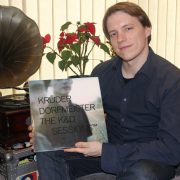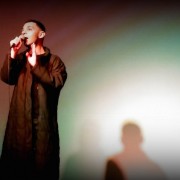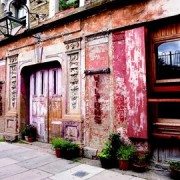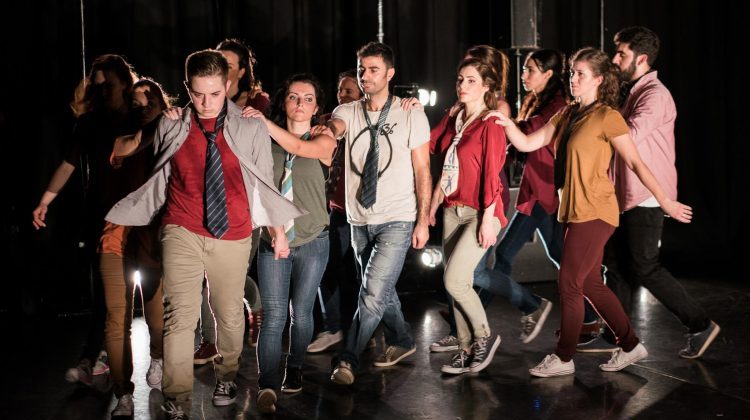
Project 51 Pic: Jose Ramon Caamano Photography
Two Palestinian dance groups – one from London and another from Ljubljana in Slovenia – have collaborated in a one-off theatrical production to tell the story of the 2014 Gaza conflict.
Project 51, performed at Rich Mix, Shoreditch, on Saturday, aimed to highlight the disproportionate media coverage of the 51 days of war in Gaza in 2014. It explored the view of how more news coverage is given to victims of conflict and terrorism in the West than in the Middle East.
Slovenia-based Hava Dance Group and London-based dance theatre troupe Al-Zaytouna, incorporated contemporary elements into the traditional dabke – an energetic traditional Arabic dance – to create Project 51.
The performance portrayed a Gazan man trying to distract his daughter from war, raising the question of unequal media coverage in world conflicts.
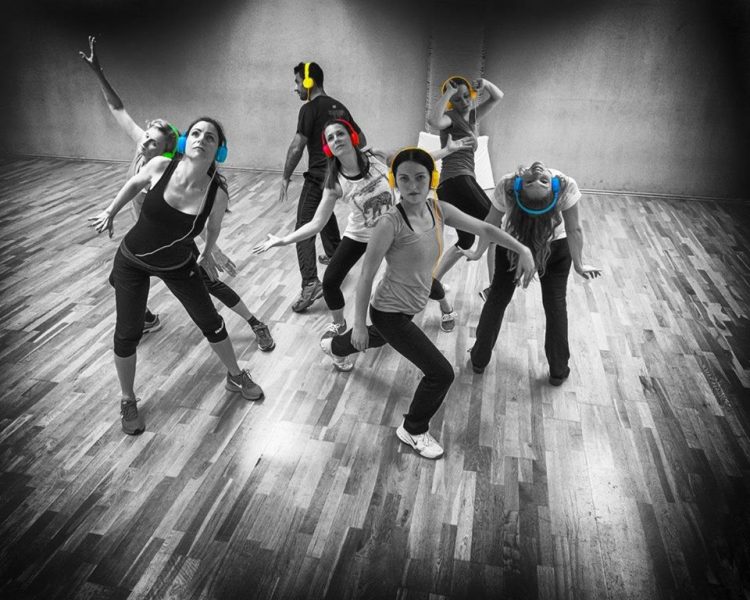
Project 51 Pic: Drago Videmsek
Palestinian-born Ahmed Najar, 35, the director and writer said: “What struck me in the whole coverage of the media is whenever you see an explosion anywhere in the Middle East, it is statistics. It is like, ‘explosion, dozens of people were killed’, that is always the title.”
“What happened in France, with Charlie Hebdo, is absolutely dreadful, but the focus was on individuals, their families and how their lives were affected, whereas others were just a statistic.”
“After that, the incidents that happened around the world, and seeing how they were being covered and comparing them with how the incidents in Palestine were covered in the Western media particularly, made me feel like there is an urgency to do something about it. I felt the best way was to do a play, where we highlight the biased side of the story.”
The dancing was interspersed with news footage of the 2014 Gaza conflict and the Charlie Hebdo terrorist shootings to highlight which news items dominate the headlines.
Najar said he wanted the audience to reflect upon how they perceive victims of different conflicts: ‘’When Charlie Hebdo [occurred] everyone paid attention, everyone wanted solidarity, everyone changed their Facebook profile to the French flag.”
The news clippings included footage of the late MP Tony Benn, famously criticising the BBC’s decision not to broadcast a public appeal for funds for victims of the Gaza war.
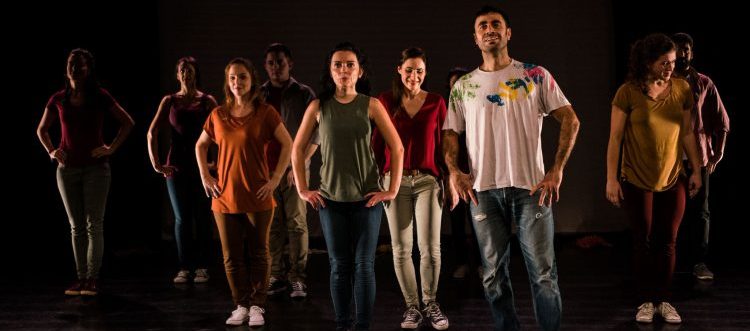
Project 51 Pic: Jose Ramon Caamano Photography
The 2014 Gaza war was launched by Israel to prevent alleged rocket fire into the occupied territories. More than 2,000 Palestinians, the majority of whom were civilians died over 51 days.
The play included poignant footage of Khaled Hamad, a Palestinian news cameraman, who was filming the Israeli attack when he was hit by an artillery shell. His camera continued rolling after he was struck and long after he died.
Project 51 was backed by Arts Canteen, a London-based arts platform which facilitates Arab arts to raise awareness of Middle Eastern culture.
The reaction from the audience has been positive:
Sue Wood, 63, a teacher, praised the choreography: “Throughout the different scenes there was the joy of the dabke, which had the audience clapping and everything. Then, when something terrible happened, you could see the agony and pain in the dancing at the same time. It was very clever.”
Nifesi Taiwo, 22, a transport engineer, had limited knowledge of Palestine prior to seeing Project 51. She said:
“It was a bit of an eye-opener, Gaza and seeing it from a different angle. It was really powerful, it made me want to go and research more on Palestine.”
Zina Ja’Ja, 32, a student said: “I think it will raise a lot of questions, a lot of contradictions in the media, in the people also, what do they actually concentrate on when they listen to the news and if they actually filter and criticise, with a critical eye.”
Follow Sundus Saeed on Twitter

